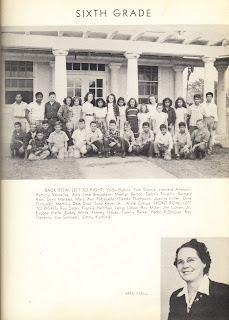I've finally got the correct photo from the 1949 Sugar Land Gator yearbook showing Jane Broughton Schiller's 6th grade class.
I mentioned to Dulles alums that Rit Jons passed away in Kerrville last month. Click here to view an obituary. My best to Becky and their children and grandchildren.
Also, Scotty Hightower Bass (DHS '66) sent me this note about the 1916 Cleveland Hustlers baseball team on which her grandfather, L. V. Hightower, Sr. played.
Also, Scotty Hightower Bass (DHS '66) sent me this note about the 1916 Cleveland Hustlers baseball team on which her grandfather, L. V. Hightower, Sr. played.
We have really enjoyed this picture and article on my grandfather, Lockhart Valentine Sr. # 6 on the Hustler baseball team of Cleveland. Also in the picture are his brothers, Sam Hightower and Cam Hightower. I am trying to get more information on the game. It appears that this picture was taken a year or two before Daddy was born in 1917. What wonderful history to pass on to our children and grandchildren!!! Daddy's father was a fabulous baseball player and I think he played on the Houston Buffalos team before becoming Sheriff of Liberty and then County Clerk. When he passed away in 1946, a year before I was born, my grandmother Margaret Scott Hightower "Maggie" took over as County Clerk. My Uncle Ross Hightower played baseball for Baylor, but Dad and his brother Don were the football players from Texas A&I.















































